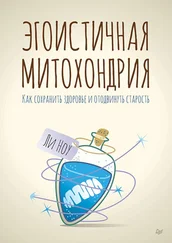Pagel, J. F. et al. ‘Medications for the Treatment of Sleep Disorders: An Overview.’ Prim Care Companion J Clin Psychiatry (2001): 3: 118–125.
Malhotra, S. et al. ‘The Therapeutic Potential of Melatonin: A Review of the Science.’ MedGenMed (2004): 6: 46.
Patorno, E. et al. ‘Benzodiazepines and risk of all cause mortality in adults: cohort study.’ BMJ (2017): 358: j2941.
CBT-I is strongly recommended by the American College of Physicians as the first-line treatment for people suf ering from chronic insomnia – not sleeping tablets.
Eriksson, E. et al. ‘Consistent Superiority of Selective Serotonin Re-uptake Inhibitors Over Placebo in Reducing Depressed Mood in Patients with Major Depression.’ Mol Psychiatry (2016): 21: 523–530.
Owens, M. J. et al. ‘Role of Serotonin in Pathophysiology of Depression: Focus on the Serotonin Transporter.’ Clin Chem (1994): 40: 288–295.
Smith, K. A. et al. ‘Relapse of Depression After Rapid Depletion of Tryptophan.’ The Lancet (1997): 349: 915–919.
Swaab, D. et al. ‘Elevated Cortisol in Rats Induces Neuronal Damage.’ Ageing Res Rev (2005): 4 (2): 141–194.
Hen, R. et al. ‘Chronic Fluoxetine Stimulates Maturation and Synaptic Plasticity of Adult-born Hippocampal Granule Cells.’ J Neurosci (2008): 1374–1384.
Mao, Q. Q. et al. ‘Long-term Treatment with Peony-glycosides Reverses Chronic Unpredictable Mild Stress-induced Depressive-like Behaviour via Increasing Expression of Neurotrophins in Rat Brain.’ Behav Brain Res (2010): 210: 171–177.
Benicky, J. et al. ‘Blockade of Brain Angiotensin II Receptors Ameliorates Stress, Anxiety, Brain Infl ammation and Ischaemia: Therapeutic Implications.’ Psychoneuroendocrinology (2011): 36: 1–18.
Dantzer, R. et al. ‘Infl ammation-associated Depression: From Serotonin to Kynurenine.’ Psychoneuroendocrinology 36: 426–436.
Bremmer, M. A. et al. ‘Infl ammatory Markers in Late-life Depression: Results from a Population-based Study.’ J Af ect Disord (2008): 106: 249–255.
Lieberman, D. E. ‘Evolution’s Sweet Tooth.’ The New York Times (5 June 2012).
Greer, S. et al. ‘The Impact of Sleep Deprivation on Food Desire in the Human Brain.’ Nat Commun (2013): 4: 2259.
Rada, P. ‘Daily Bingeing on Sugar Repeatedly Releases Dopamine in the Accumbens Shell.’ Neuroscience (2005): 737–744.
Tanda, G. et al. ‘Cannabinoid and Heroin Activation of Mesolimbic Dopamine Transmission by a Common μ Opioid Receptor Mechanism.’ Science (1997): 276: 2048–2850.
Volkow, N. D. et al. ‘Imaging Dopamine’s Role in Drug Abuse and Addiction.’ Neuropharmacology (2009): 56: 3–8.
‘DSM IV Substance Dependence Criteria.’ American Psychiatric Association. Diagnostic and Statistical Manual of Mental Disorders (4th ed.) American Psychiatric Association (2000).
Alexander, B. K. et al. ‘The Effect of Housing and Gender on Morphine Self-administration in Rats.’ Psychopharmacology (1978): 58: 175–179.
Robins, L. ‘Vietnam Veterans’ Rapid Recovery From Heroin Addiction: A Fluke or Normal Expectation?’ Addiction (1993): 88: 1041–1054.
Owens, M. J. et al. ‘Role of Serotonin in Pathophysiology of Depression: Focus on the Serotonin Transporter.’ Clin Chem (1994): 40: 288–295.
Walker, M. et al. ‘The Impact of Sleep Deprivation on Food Desire in the Human Brain.’ Nat Commun (2013): 2259.
Sinha, R. ‘Chronic Stress, Drug Use and Vulnerability to Addiction.’ Ann NY Acad Sci (2008): 1141: 105–130.
Dinan, T. G. ‘Glucocorticoids and the Genesis of Depressive Illness. A Psychobiological Model.’ Br J Psychiatry (1994): 164: 365–371.
Smith, K. A. et al. ‘Relapse of Depression After Rapid Depletion of Tryptophan.’ The Lancet (1997): 349: 915–919.
По материалам сайта Alzheimer’s Association alz.org.
Hurd, M. et al. ‘Monetary Costs of Dementia in the United States.’ N Engl J Med (2013): 368: 1326–1334.
Eli Lilly statement: http://lilly.mediaroom.com/index.php?s=9042&item=137604.
Powell, A. ‘Plotting the Demise of Alzheimer’s.’ Harvard Gazette(April 2017). URL: https://news.harvard.edu/gazette/story/2017/04/harvard-researchers-plot-early-attack-against-alzheiers/.
Ibid.
Hasselmo, M. E. ‘The Role of Acetylcholine in Learning and Memory.’ Curr Opin Neurobiol (2006): 16 (6): 710–715.
Coyle, J. T. et al. ‘Alzheimer’s Disease: A Disorder of Cortical Cholinergic Innervation.’ Science (1983): 219: 1184–1190.
Nieoullon, A. ‘Acetylcholinesterase Inhibitors in Alzheimer’s Disease: Further Comments on Their Mechanisms of Action and Therapeutic Consequences.’ Psychol Neuropsych Vieil (2010): 8: 123–131.
Moslemnezhad, A. et al. ‘Altered Plasma Marker of Oxidative DNA Damage and Total Antioxidant Capacity in Patients with Alzheimer’s Disease.’ Caspian J Intern Med (2016): 7: 88–92.
Cacabelos, R. et al. ‘The Glutamatergic System and Neurodegeneration in Dementia: Preventive Strategies in Alzheimer’s Disease.’ Int J Geriatr Psychiatry (1999): 14: 3–47.
Parsons, C. G. et al. ‘Glutamate in CNS Disorders as a Target for Drug Development: An Update.’ Drugs New Perspect. I (November 1998): 523–569.
Goedert, M. et al. ‘Tau Proteins and Neurofibrillary Degeneration.’ Brain Pathol (1991): 1: 279–286.
Deane, R. et al. ‘The Role of the Blood-brain Barrier in the Pathogenesis of Alzheimer’s Disease.’ Curr Alzheimer Res (2007): 4: 191–197.
Hardy, J. et al. ‘Amyloid Deposition as the Central Event in the Aetiology of Alzheimer’s Disease.’ Trends Pharmacol Sci (1991): 12: 383–388.
Xie, L. et al. ‘Sleep Drives Metabolite Clearance from the Adult Brain.’ Science (2013): 342: 373–377.
Spira, A. et al. ‘Impact of Sleep on Cognitive Decline and Dementia.’ Curr Opin Psychiatry (2014): 27: 478–483.
Mergenthaler, P. et al. ‘Sugar for the Brain: The Role of Glucose in Physiological and Pathological Brain Function.’ Trends Neurosci (2013): 36: 587–597.
Berti, V. et al. ‘PET/CT in Diagnosis of Dementia.’ Ann NY Acad Sci(2011): 1228: 81–92.
Reiman, E. M. et al. ‘Functional Brain Abnormalities in Young Adults at Genetic Risk for Late-onset Alzheimer’s Dementia.’ Proc Natl Acad Sci USA (2004): 101: 284–289.
Читать дальше
Конец ознакомительного отрывка
Купить книгу








![Дипак Чопра - Сила внутри тебя [Как «перезагрузить» свою иммунную систему и сохранить здоровье на всю жизнь] [litres]](/books/405248/dipak-chopra-sila-vnutri-tebya-kak-perezagruzit-thumb.webp)



